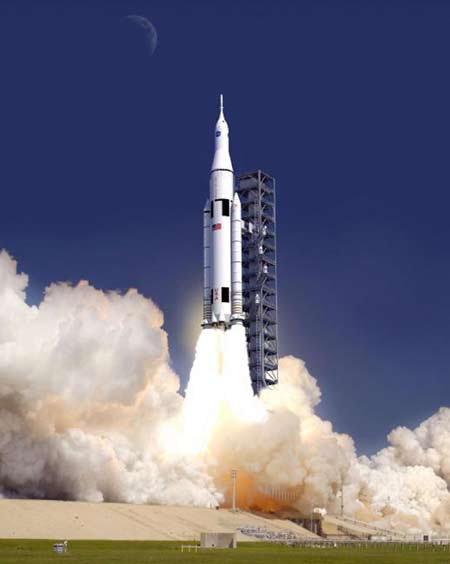NASA to develop deep space rocket
 0 Comment(s)
0 Comment(s) Print
Print E-mail
Xinhua, September 15, 2011
E-mail
Xinhua, September 15, 2011
The U.S. space agency NASA unveiled plans on Wednesday for a deep space rocket to carry astronauts to the moon, Mars and other destinations beyond the International Space Station.
 |
|
An artist's rendering of a deep space rocket named the Space Launch System, or SLS, obtained by Reuters from NASA on September 14, 2011, shows it lifting off from a launch pad. [Photo/Agencies] |
The Space Launch System, or SLS, will be designed to carry the Orion Multipurpose Crew Vehicle, as well as important cargo, equipment and science experiments to Earth's orbit and destinations beyond. Additionally, the SLS will serve as a backup for commercial and international partner transportation services to the International Space Station.
"This launch system will create good-paying American jobs, ensure continued U.S. leadership in space, and inspire millions around the world," NASA Administrator Charles Bolden said in a statement. "President Obama challenged us to be bold and dream big, and that's exactly what we are doing at NASA. While I was proud to fly on the space shuttle, kids today can now dream of one day walking on Mars."
The SLS rocket will incorporate technological investments from the Space Shuttle program and the Constellation program in order to take advantage of proven hardware and cutting-edge tooling and manufacturing technology that will significantly reduce development and operations costs.
The first developmental flight, or mission, is targeted for the end of 2017, according to NASA.





